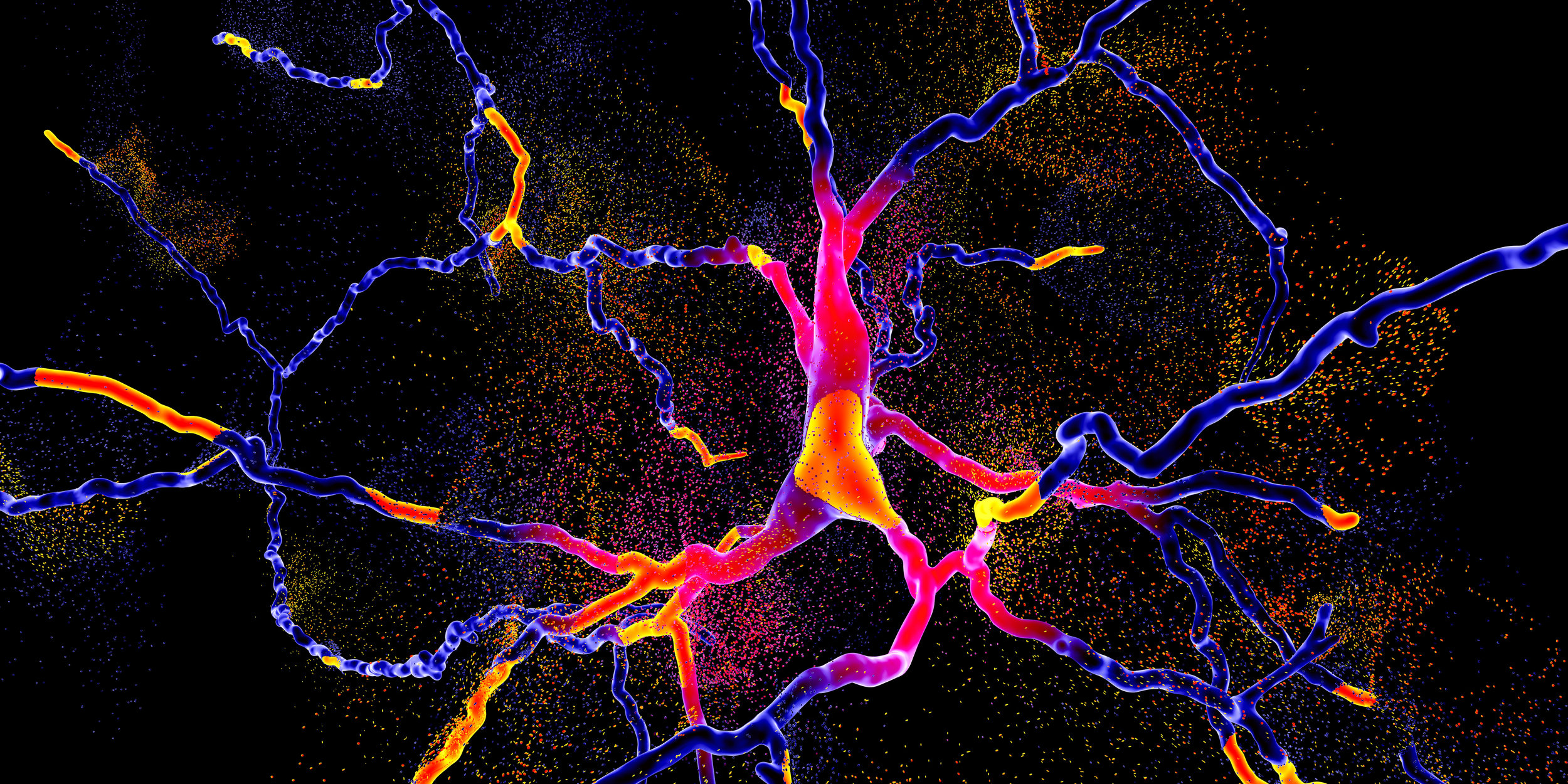Quantum dots could aid in fight against Parkinson's

A large team of researchers with members from several institutions in the U.S., Korea and Japan has found that injecting quantum dots into the bloodstreams of mice led to a reduction in fibrils associated with Parkinson's disease. In their paper published in the journal Nature Nanotechnology, the group describes their studies of the impact of quantum dots made of graphene on synuclein and what they found.
Quantum dots are particles that exist at the nanoscale and are made of semiconducting materials. Because they exhibit quantum properties, scientists have been conducting experiments to learn more about changes they cause to organisms when embedded in their cells. In this new effort, the researchers became interested in the idea of embedding quantum dots in synuclein cells.
Synucleins make up a group or family of proteins and are typically found in neural tissue. One type, an alpha-synuclein, has been found to be associated with the formation of fibrils as part of the development of Parkinson's disease. To see how such a protein might react when exposed to quantum dots, the researchers combined the two in a petri dish and watched what happened. They found that the quantum dots became bound to the protein, and in so doing, prevented it from clumping into fibrils. They also found that doing so after fibrils had already formed caused them to come apart. Impressed with their findings, the team pushed their research further.
Noting that quantum dots are small enough to pass through the blood/brain barrier, they injected quantum dots into mice with induced Parkinson's disease and monitored them for several months. They report that after six months, the mice showed improvements in symptoms.
The researchers suggest that quantum dots might have a similar impact on multiple ailments where fibrilization occurs, noting that another team had found that injecting them into Alzheimer's mouse models produced similar results.
It is still not known if injecting similar or different types of quantum dots into human patients might have the same effect, they note. Nor is it known if doing so would have any undesirable side effects. Still, the researchers are optimistic about the idea of using quantum dots for treatment of such diseases and because of that, have initiated plans for testing with other animals—and down the road they are looking at the possibility of conducting clinical trials in humans.





